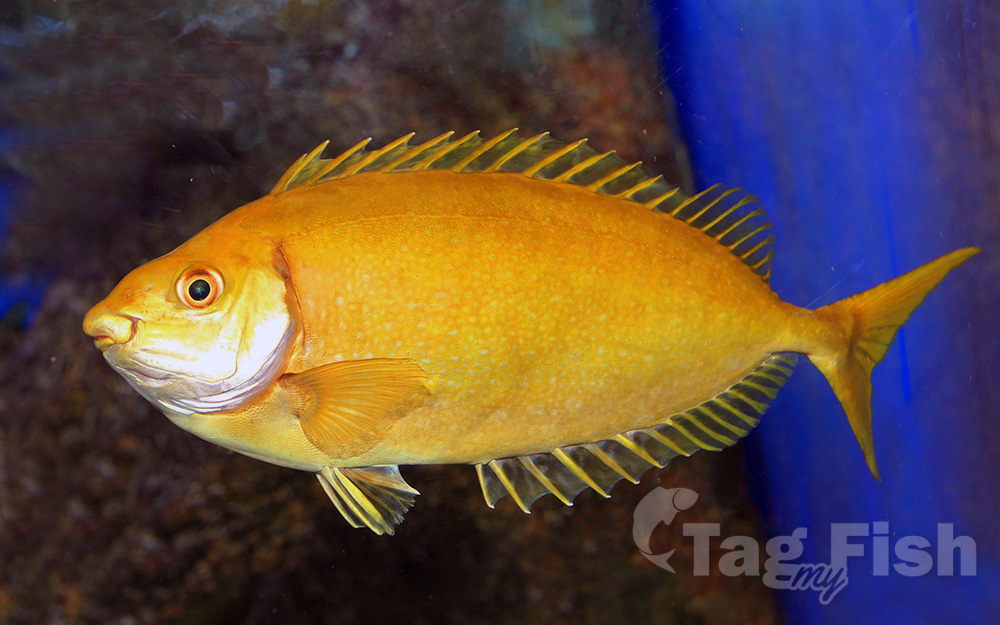Mottled spinefoot
(Siganus fuscescens)

Classification
General data
Siganus fuscescens has a moderately slender, laterally compressed body, the standard length being 2.3 to 2.9 times its depth. The dorsal profile of the head is weakly to notably concave over the eyes with either a blunt or a pointed snout. The front nostril has a flap which becomes shorter as the fish grows and is reduced to a small peak in the oldest fishes.
The dorsal fin has 13 spines and 10 soft rays while the anal fin has 7 spines and 9 soft rays. The front spine on the dorsal fin points forwards. The caudal fin is nearly emarginate in smaller individuals of less than 10 cm (3.9 in) standard length becoming forked in larger fish.
This species attains a maximum total length of 40 cm (16 in), although 25 cm (9.8 in) is more typical.
The overall colour of this rabbitfish is greenish-grey to brown, fading to silvery on the lower body, and it has a large number of small light-bluish spots on the flanks, and a slender brown bar along the upper margin of the operculum. Additionally, they frequently possess a dark patch under the start of the lateral line. When they are asleep or threatened, the adults adopt a mottled pattern.
Siganus fuscescens is found in the eastern Indian Ocean and the Western Pacific Ocean from the Andaman Sea east to Fiji and Samoa, north to Japan and south to Australia. In Australia, its range extends from Busselton, Western Australia around the tropical northern coast to the Nadgee River in southern New South Wales. It is found around Lord Howe Island in the Tasman Sea. There is a single record from the Italian Mediterranean Sea, but it is thought that this record probably refers to an individual transported by shipping.
It is found as deep as 50 m (160 ft) in shallow coastal waters in algae, sea grass and coral or rocky reefs. It is frequently encountered in large estuaries.











